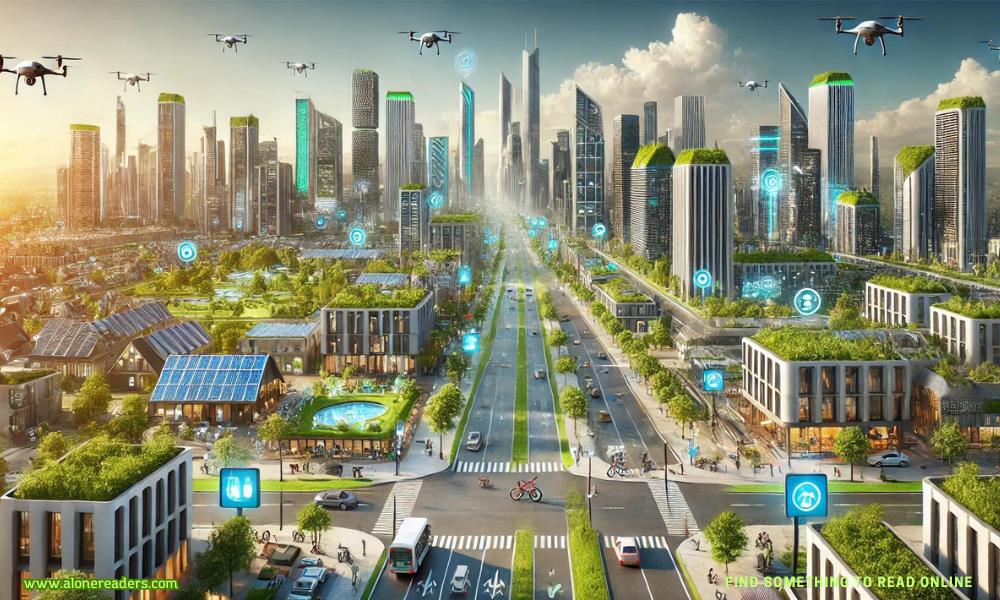
Urban environments around the world are undergoing a significant transformation as technology plays an increasingly pivotal role in shaping our cities. The concept of "smart cities" is emerging as a blueprint for urban planning in the future, aiming to create spaces that are not only more sustainable but also highly efficient in their use of resources. This article explores the various ways in which technology is revolutionizing urban planning and the potential benefits that smart cities can offer to their inhabitants.
One of the most prominent aspects of smart cities is the integration of information and communication technology (ICT) into the infrastructure and services of the city. This integration allows for better management and optimization of resources such as energy, water, and waste. For example, smart grids enable more efficient distribution and consumption of electricity by balancing supply and demand in real-time. This not only reduces energy waste but also helps in incorporating renewable energy sources, thereby contributing to the sustainability of the city.
Transportation is another critical area where technology is making a significant impact. Smart cities are adopting advanced traffic management systems that use sensors, data analytics, and artificial intelligence to monitor and control traffic flow. These systems can reduce congestion, lower emissions, and improve overall mobility. Additionally, the advent of autonomous vehicles and the expansion of electric vehicle infrastructure are set to revolutionize urban transportation, making it cleaner and more efficient.
Public services in smart cities are also becoming more responsive and efficient through the use of technology. For instance, smart waste management systems utilize sensors to monitor the fill levels of trash bins and optimize collection routes, thereby reducing operational costs and minimizing the environmental footprint. Similarly, smart water management systems can detect leaks in the water supply network, ensuring timely repairs and reducing water wastage.
One of the key elements of a smart city is the use of data. By collecting and analyzing vast amounts of data from various sources such as sensors, social media, and public records, city planners can gain valuable insights into the needs and behaviors of residents. This data-driven approach enables more informed decision-making and allows for the development of tailored solutions that address specific urban challenges. For example, predictive analytics can be used to anticipate and mitigate the impact of natural disasters, ensuring the safety and resilience of the city.
The concept of smart cities also encompasses the idea of enhancing the quality of life for residents. Smart healthcare systems, for instance, leverage telemedicine, wearable devices, and health data analytics to provide better medical care and improve public health outcomes. Smart buildings equipped with IoT devices can optimize lighting, heating, and cooling systems to create more comfortable and energy-efficient living spaces. Furthermore, the proliferation of high-speed internet and digital services ensures that residents have access to information, education, and entertainment, contributing to a more connected and inclusive society.
Environmental sustainability is a core objective of smart cities. Green building practices, urban green spaces, and sustainable transportation options are being prioritized to reduce the carbon footprint of urban areas. Innovative solutions such as vertical farming and rooftop gardens are being implemented to promote local food production and enhance urban biodiversity. Moreover, smart cities are focusing on reducing air and noise pollution through the use of clean energy sources, efficient waste management, and the promotion of alternative modes of transportation like cycling and walking.
Community engagement and participation are essential components of smart city initiatives. By leveraging digital platforms and social media, city authorities can foster greater interaction with residents, encouraging them to contribute to the planning and development process. This participatory approach ensures that the needs and preferences of the community are taken into account, leading to more inclusive and democratic urban environments.
In conclusion, the evolution of smart cities represents a significant shift in urban planning, driven by technological advancements and a commitment to sustainability. By integrating ICT into the fabric of the city, optimizing resource use, enhancing public services, and prioritizing environmental sustainability, smart cities have the potential to create more livable, efficient, and resilient urban environments. As technology continues to evolve, the concept of smart cities will undoubtedly play a crucial role in shaping the future of urban living, offering a promising vision for a more sustainable and efficient world.